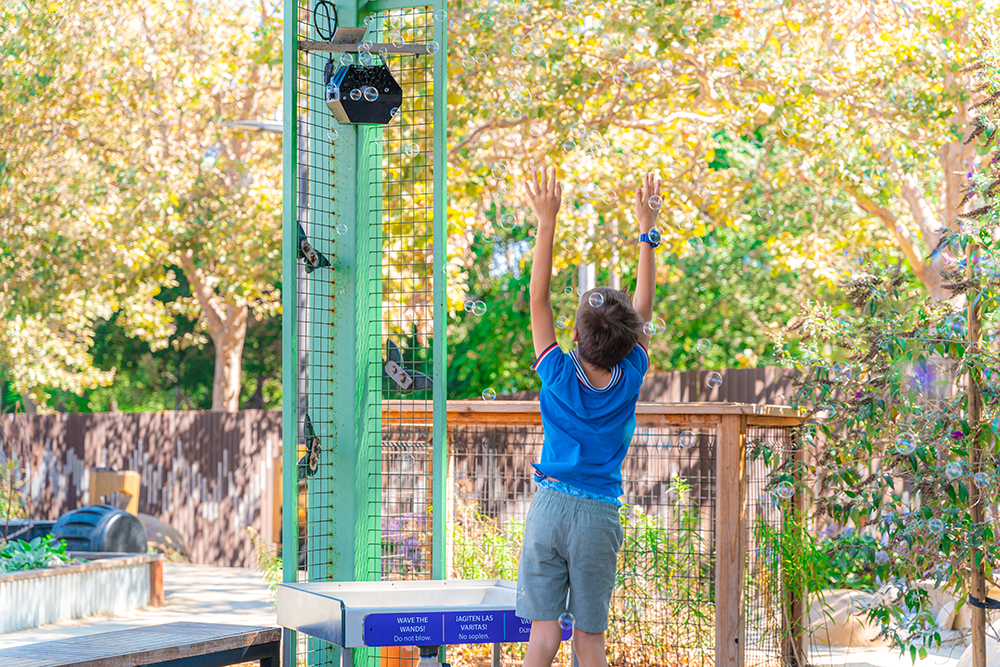By Cecilia Clark
Summertime is full of outdoor fun and adventures. As parents, we want to encourage this because exercise and physical play are important building blocks in discovering the world and developing healthy habits. However, with climate change pushing temps upwards, it’s important to know how to keep your children safe and cool.
According to the Centers for Disease Control and Prevention, infants and children up to 4 years old are among those at the greatest risk for heat-related illness, such as heat exhaustion, dehydration, and heat stroke. A child’s body temperature rises much faster than an adult’s. Young children are not able to regulate their body temperature and they sweat less, making cooling down more challenging.
Since the higher temps with heat waves are here to stay, here’s a number of ways to avoid heat exhaustion, prevent heat stroke, and keep your family cool.
Stay Inside
Try to stay inside between 10:00 a.m. and 2 p.m., and when the temperature is at 90 degrees Fahrenheit or higher. Limit your outside fun to early in the morning or later in the day when the temperatures retreat. Keep your indoor temperature between 68 and 74 degrees – this is ideal for sleeping, too. If you don’t have air conditioning, find places to hang out that do. Libraries, movie theaters, and shopping malls are good places to cool down. Many cities and towns also have cooling centers to visit for relief.
While inside, close the windows, blinds, and curtains. Use fans if you don’t have air conditioning. But the American Academy of Pediatrics warns against running a fan when temps are in the high 90s and above. At that point, the fans are just moving hot air around.
Dress Lightly
Dress in lightweight, light-colored, and loose-fitting breathable fabrics like cotton. Synthetic fabrics don’t breathe and can trap heat making your child uncomfortable.
Hydrate, Hydrate, Hydrate
Babies can become dehydrated quickly in hot weather. To keep your baby hydrated, you won’t necessarily use water. While it’s okay to give your 6–12-month-old 4 to 8 ounces of water a day, babies under 6 months get hydration from either breast milk or formula. Little ones between 1- and 3 years old need approximately 4 cups of beverages a day, including water or milk. This climbs to 5 cups for 4-to 8-year-olds. You’ll want to increase this amount during hot days. For details about water consumption and children, visit Happiest Baby.
Drink plenty of water yourself and always have a beverage with you. Don’t wait to get thirsty and avoid alcohol and caffeinated beverages.
Eat Delicious Fruit
Enjoying fruit with high water content can help the young and old stay hydrated and feel healthy. Watermelon is always a popular treat and so is cantaloupe, strawberries, peaches, and cucumbers.
Cool Off in Water Safely
Swimming in a pool of cool water or in a sprinkler is a fun way to cool off and stay active. Remember to apply sunscreen or use SPF-protective clothing and a wide-brimmed sun hat with air vents. Babies under 6 months should not be in direct sunlight.
A refreshing sponge bath with lukewarm water is perfect for your little ones if they get overheated. A cold compress on the head, neck, arms, and legs can work wonders. Spritzing your child’s skin with cool or room-temperature water during the day is a good idea, too.
What to Watch for in Children
Babies can’t tell you they are hot, and youngsters may have a hard time describing how they feel. Therefore, it’s important to know some of the signs that your little one is getting too hot and to teach your youngsters to be aware. Helping your little one be self-aware can be as simple as pointing out that their face is red and that they should cool down in the shade and have a drink of water or eat a piece of fruit.
Click here to read about the signs of heat illness. You should contact your pediatrician if your child develops any of the symptoms listed in the link.

